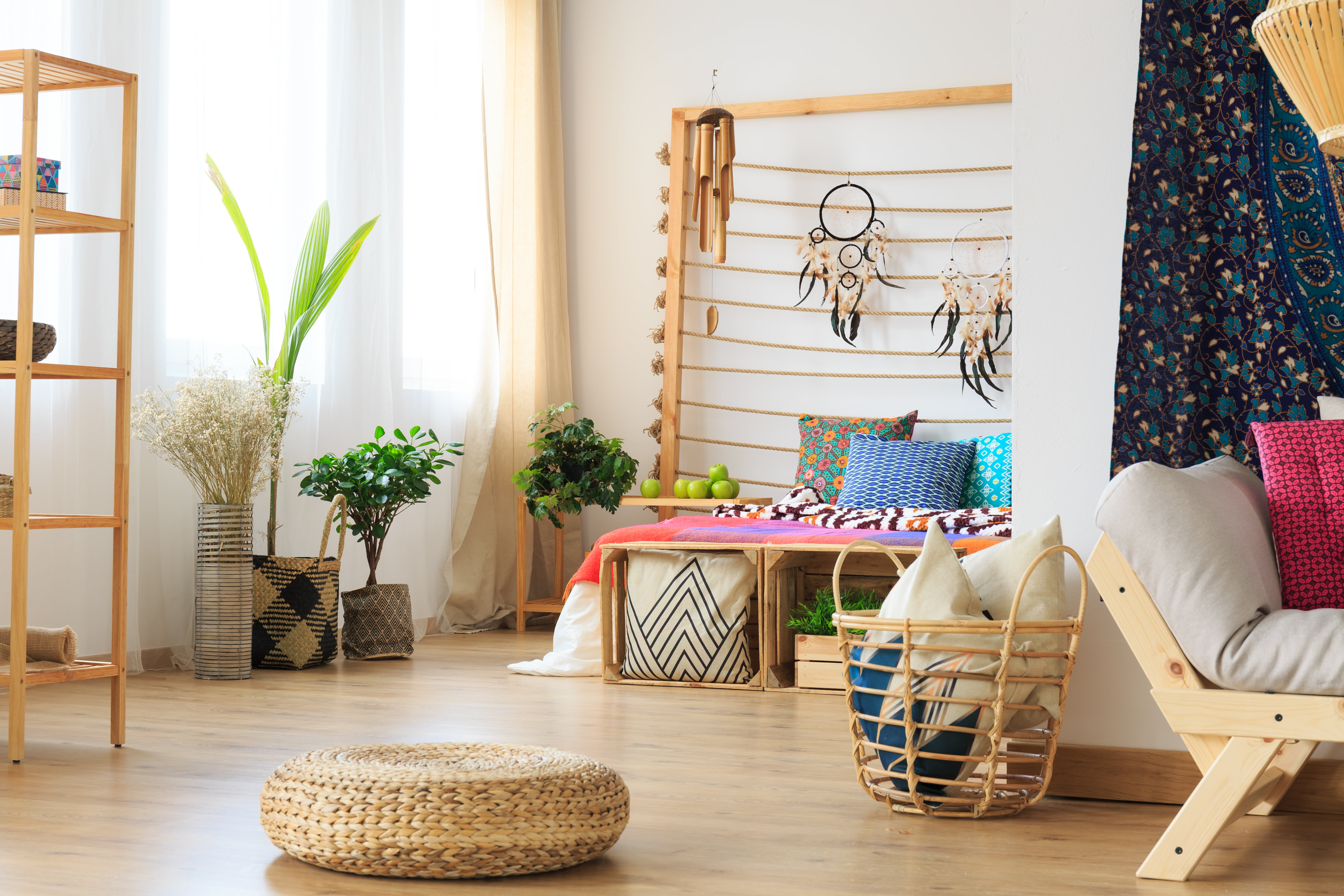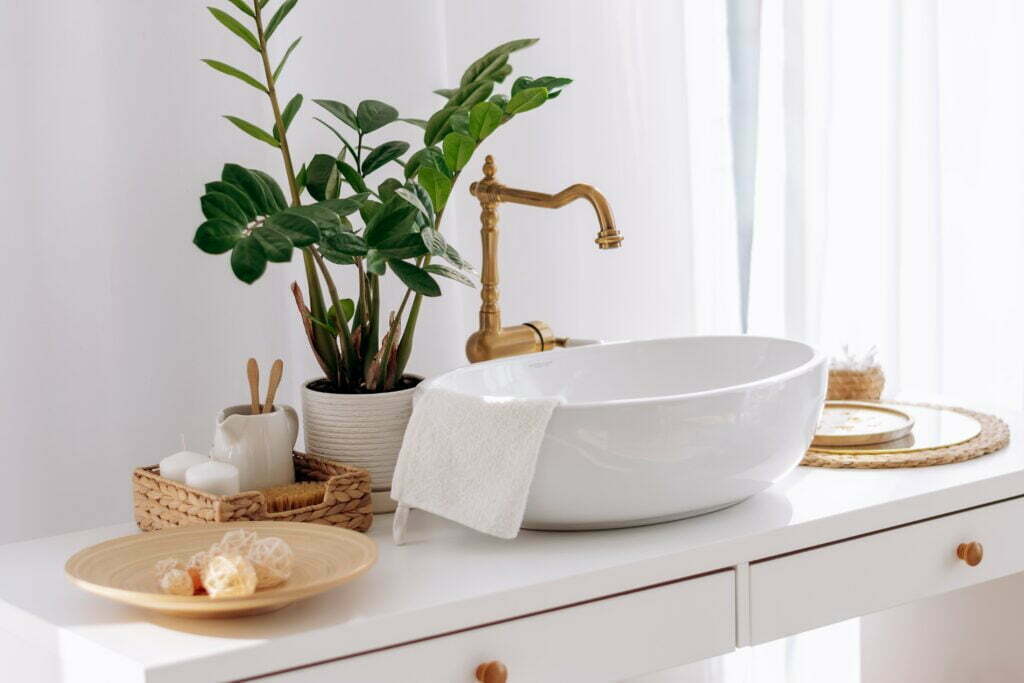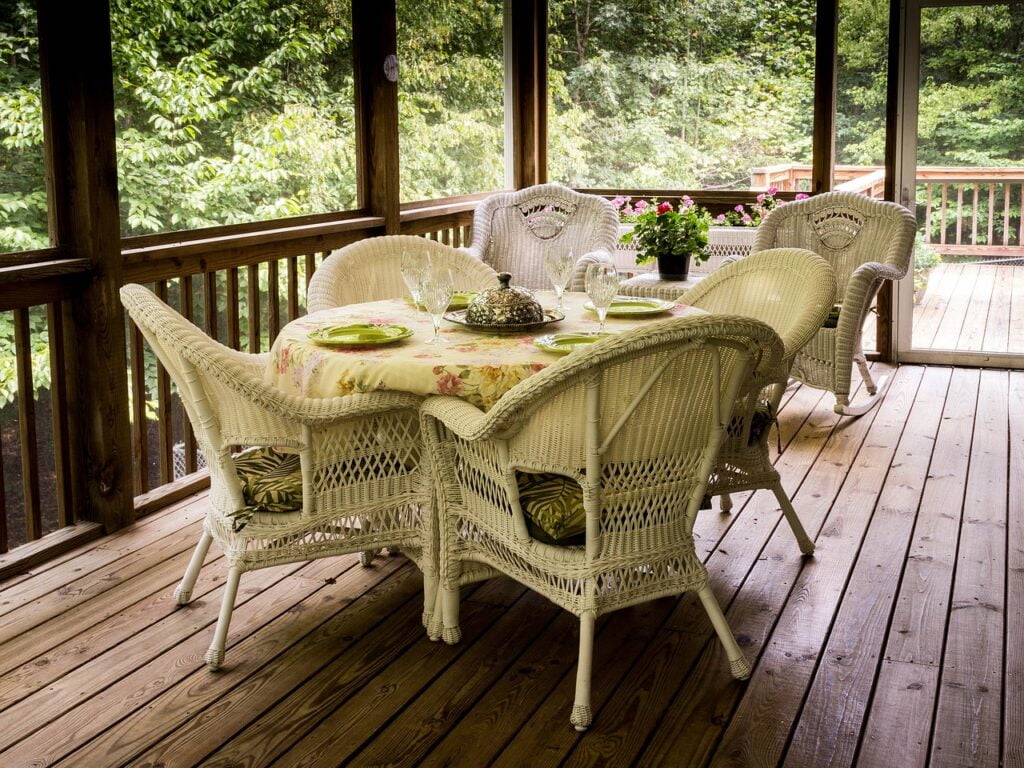Looking to transform your home into a stylish and functional oasis? Finding the perfect balance between aesthetics and practicality can seem like a daunting task, but fear not! With a few simple tips and tricks, you can achieve a space that is not only visually appealing but also serves your everyday needs. From clever storage solutions to mindful furniture choices, this article will guide you through the process of creating a home that seamlessly blends style and functionality, allowing you to enjoy the best of both worlds. So, get ready to unleash your inner interior designer and elevate your living space to new heights!
Choosing a Color Scheme
Consider the Mood and Atmosphere
When choosing a color scheme for your home, it’s important to consider the mood and atmosphere you want to create in each room. Colors have the ability to evoke certain emotions and set the tone for a space. For example, warm tones such as reds, oranges, and yellows can create a cozy and inviting atmosphere, while cool tones like blues and greens can promote a sense of calm and tranquility. Think about the purpose of each room and the mood you want to achieve, and then choose colors that align with those goals.
Coordinate with Existing Furniture and Decor
Another factor to consider when selecting a color scheme is how it coordinates with your existing furniture and decor. If you have a piece of furniture or artwork that you absolutely love and want to be the focal point of the room, choose a color scheme that complements it. Look for colors that are found in the piece and use them as inspiration for your overall palette. This will help create a cohesive and harmonious look in your space.
Use Neutral Colors as a Base
When in doubt, using neutral colors as a base is always a safe and reliable choice. Neutrals such as whites, grays, and beiges provide a timeless and versatile backdrop that can easily be accessorized with pops of color. They also create a soothing and calming atmosphere. Consider using neutral tones on larger surfaces such as walls and floors, and then introduce color through furniture, accessories, and artwork for a balanced and visually appealing space.
Incorporate Accent Colors
To add interest and personality to your home, incorporate accent colors into your color scheme. Accent colors are bold, vibrant hues that serve to highlight and draw attention to specific areas or elements in a room. They can be introduced through accessories like throw pillows, rugs, artwork, or even a painted accent wall. Just make sure to use them sparingly so they don’t overwhelm the space. Accent colors can inject energy and excitement into your home while still maintaining a cohesive and stylish look.
Furniture Selection
Determine the Purpose of Each Room
Before selecting furniture for your home, it’s important to determine the purpose of each room. Are you designing a formal living room for entertaining guests, or a cozy family room for relaxing? Understanding the function of each space will guide your furniture choices and ensure that they meet your specific needs. Make a list of the activities that will take place in each room and prioritize the furniture accordingly.
Measure the Space
Before purchasing any furniture, it’s crucial to measure your space to ensure that the pieces will fit properly. This includes not only the length and width of the room, but also the height and any architectural features such as doorways, windows, or alcoves. Be mindful of clearance spaces needed for movement and allow for enough room to comfortably accommodate the furniture. Taking accurate measurements will help you avoid the frustration and disappointment of purchasing furniture that is either too large or too small for your space.
Choose Furniture with Multiple Functions
In smaller homes or rooms, it’s essential to maximize the functionality of your furniture. Look for pieces that serve multiple purposes to make the most of your space. For example, a sofa bed can provide seating during the day and turn into a comfortable sleeping area at night. A coffee table with built-in storage can help keep your living room neat and organized. Selecting furniture with multiple functions will not only save space but also make your home more practical and efficient.
Consider the Scale and Proportion
When selecting furniture, consider the scale and proportion of the pieces in relation to the size of the room. Oversized furniture can make a small room feel cramped, while too-small furniture can make a large room look empty and unfinished. Choose furniture that is in proportion to the space and allows for comfortable circulation. Pay attention to the height of the furniture as well, ensuring that it complements the scale of the room’s architectural features.
Opt for High-Quality and Durable Pieces
Investing in high-quality and durable furniture is crucial for long-term enjoyment and functionality. While it may be tempting to opt for cheaper options, poor-quality furniture can quickly show signs of wear and tear and may need to be replaced sooner than expected. Look for furniture made from quality materials, such as solid wood or sturdy upholstered pieces. Consider the construction and craftsmanship of the furniture to ensure its durability. Investing in well-made furniture will save you money in the long run and ensure that your home remains stylish and functional for years to come.

Effective Space Planning
Evaluate Traffic Flow
When designing the layout of your home, it’s important to evaluate and consider the flow of traffic in each room. Think about how people will move through the space and ensure that there are clear pathways with minimal obstructions. Avoid placing furniture in a way that creates obstacles or makes it challenging to navigate from one area to another. Analyze the natural flow of movement and arrange furniture in a way that promotes ease of movement and accessibility.
Create Functional Zones
Effective space planning involves creating functional zones within each room. Rather than having one large, open space, divide it into smaller areas based on their intended use. For example, in a living room, you can create a seating area for conversation, a reading nook, and a television viewing area. By clearly defining these zones, you can maximize the functionality of the space and ensure that each area serves its purpose without interfering with others.
Maximize Vertical Space
Don’t forget to make use of vertical space when planning the layout of your home. Walls, ceilings, and even the space above furniture can be utilized to provide additional storage, display areas, or decorative elements. Install shelving units or bookcases on walls to store books, decorative items, or even create a gallery wall. Hang curtains or drapes close to the ceiling to give the illusion of higher ceilings and make the room appear more spacious. By thinking vertically, you can make the most of your available space and create a visually interesting and functional environment.
Consider Furniture Placement
Once you’ve determined the traffic flow and created functional zones, consider the placement of your furniture within each room. Arrange furniture in a way that fosters conversation and social interaction. For example, in a living room, position the seating area to face each other rather than solely facing the television. Ensure that there is ample space for people to comfortably move around the furniture and that there is enough surface area for drinks, snacks, and other items. Carefully consider the location of electrical outlets and ensure that they are easily accessible. Proper furniture placement will contribute to the overall functionality and comfort of your home.
Storage Solutions
Assess Storage Needs
To create a stylish and functional home, it’s essential to assess your storage needs. Consider the belongings you own and how much storage space you require for each room. Make a list of items that need to be stored, such as clothing, shoes, books, toys, or kitchen supplies. This will help you determine the type and amount of storage solutions needed to keep your space organized and clutter-free.
Utilize Built-in Storage
Built-in storage is a fantastic way to maximize space while maintaining a clean and streamlined look. Look for opportunities to incorporate built-in storage solutions, such as custom closets, shelving units, or cabinets. Built-in storage can be customized to fit your specific needs and can be seamlessly integrated into the architectural features of your home. They offer a dedicated place for your belongings and help eliminate clutter from your living areas.
Invest in Multi-functional Pieces
When selecting furniture, prioritize pieces that offer additional storage or functionality. For example, a coffee table with drawers or a storage ottoman can provide a hidden place to store blankets, magazines, or remote controls. Consider using bed frames with built-in drawers or shelving to maximize storage in bedrooms. Multi-functional furniture not only saves space but also adds practicality and versatility to your home.
Use Vertical Space
Don’t forget to utilize vertical space when it comes to storage solutions. Wall-mounted shelves, hanging organizers, and tall cabinets can provide additional storage without taking up valuable floor space. Take advantage of unused wall space by installing hooks or racks for hanging coats, bags, or other accessories. By utilizing vertical space, you can keep your home organized while still maintaining a visually appealing and functional environment.
Organize with Containers and Baskets
In addition to built-in storage and multi-functional furniture, containers and baskets are excellent tools for organizing and storing belongings. Use decorative baskets or bins to corral smaller items like toys, office supplies, or bathroom essentials. Utilize clear storage containers for items that are not used frequently, such as seasonal clothing or holiday decorations. Labeling containers and baskets can further enhance organization, making it easier to locate and access items when needed.

Lighting Design
Prioritize Natural Light
When designing the lighting for your home, prioritize natural light as much as possible. Not only does natural light create a warm and inviting atmosphere, but it also has numerous health benefits. Natural light helps regulate our sleep-wake cycle, boosts our mood, and provides essential vitamin D. Maximize the amount of natural light coming into your home by keeping windows clear of obstructions and using light-colored window treatments that allow for light to pass through.
Layer Lighting Sources
To create a well-lit and functional space, it’s important to have a variety of lighting sources that can be layered to suit different needs and moods. Incorporate three main types of lighting: ambient, task, and accent lighting. Ambient lighting provides overall illumination and can be achieved through ceiling-mounted fixtures, recessed lighting, or even floor lamps. Task lighting is focused lighting that illuminates specific areas for activities such as reading, cooking, or working. Desk lamps, under-cabinet lights, and adjustable floor lamps are examples of task lighting. Accent lighting is used to highlight specific objects or architectural features, such as artwork or a fireplace. Wall sconces, track lighting, and spotlights are often used as accent lighting. By layering these different lighting sources, you can create a flexible and inviting environment.
Choose the Right Fixtures
When selecting light fixtures, consider the style and function of the space. Light fixtures can be both functional and decorative, so choose ones that complement your overall design aesthetic while providing the right amount and type of light. Consider the size and scale of the fixture in relation to the room and make sure it suits the purpose of the space. For example, chandeliers or pendant lights are often used in dining rooms or entryways to create a focal point, while recessed lighting is more common in kitchens or bathrooms for general illumination. Choose fixtures that are well-made and of high-quality to ensure their longevity and performance.
Consider Task Lighting
Task lighting is crucial for areas where specific activities take place, such as reading or cooking. Consider the tasks that will be performed in each room and provide adequate task lighting accordingly. In a kitchen, for example, under-cabinet lighting or pendant lights above the countertop can provide focused illumination for food preparation. In a home office or study area, a desk lamp or adjustable floor lamp can provide ample lighting for reading and working. Consider the placement and type of task lighting needed to ensure that the space is well-lit and conducive to its intended purpose.
Window Treatments
Balance Privacy and Natural Light
When choosing window treatments, it’s important to strike a balance between privacy and natural light. Consider the level of privacy needed in each room and select window treatments accordingly. In bedrooms or bathrooms, for example, opt for blinds, shades, or curtains that can be closed fully to ensure privacy. In living areas, choose window treatments that allow for natural light to flow in while still maintaining a level of privacy, such as sheer or translucent curtains or blinds.
Select Appropriate Fabrics
When selecting fabrics for your window treatments, consider both functionality and style. For rooms that receive a lot of sunlight, choose fabrics that can withstand sun exposure and won’t fade easily. Sheer fabrics can help filter and diffuse sunlight while still allowing for natural light to come through. Thicker fabrics like velvet or heavy drapes can provide insulation and help regulate temperature, making them suitable for bedrooms or living rooms. Look for fabrics that are durable and easy to clean, especially in high-traffic areas or rooms prone to dirt or moisture.
Consider Functionality and Style
Window treatments not only serve a functional purpose but also contribute to the overall style and decor of your home. Consider the style and atmosphere you want to create in each room and choose window treatments that reflect that aesthetic. For a contemporary and minimalist look, opt for simple, clean lines and neutral colors. If you prefer a more traditional or elegant feel, consider window treatments with ornate details or rich fabrics. Consider the size and placement of windows when selecting window treatments to ensure that they enhance the overall design and architecture of the space.
Add Valances or Cornices for a Finished Look
To give your windows a polished and finished look, consider adding valances or cornices. Valances are fabric treatments that are installed at the top of the window, while cornices are wooden or upholstered boxes that cover the top portion of the window. Both valances and cornices can add dimension and visual interest to your windows. They also help conceal hardware and create a cohesive look when paired with curtains or blinds. Choose valances or cornices that complement your overall decor and enhance the style of the room.
Flooring Options
Consider Lifestyle and Foot Traffic
When choosing flooring for your home, it’s important to consider your lifestyle and the amount of foot traffic each room receives. Different types of flooring have varying levels of durability and maintenance requirements. If you have children or pets, for example, you may want to choose flooring that is more resistant to scratches, stains, and easy to clean. High-traffic areas like entryways and hallways may require flooring that can withstand heavy use and is easy to maintain.
Choose Durable and Easy-to-clean Materials
In addition to considering your lifestyle, choose flooring materials that are durable and easy to clean. Hardwood flooring is a popular choice for its timeless appeal and durability. It can be refinished if it becomes scratched or worn over time. Laminate flooring offers a more affordable alternative to hardwood and is resistant to scratches, stains, and fading. Tile flooring is known for its durability and water resistance, making it ideal for kitchens and bathrooms. Vinyl flooring is another low-maintenance option that is available in a variety of styles and patterns. Consider the pros and cons of each flooring material and choose one that meets your needs in terms of both functionality and style.
Opt for Versatile and Timeless Designs
When considering flooring options, opt for versatile and timeless designs that will withstand changing trends and personal preferences. Neutral colors and classic patterns are less likely to become dated and can easily be paired with different styles of decor. While bold and trendy flooring options may be appealing at first, they may not stand the test of time and could limit your ability to redecorate or update your home in the future. Choose flooring that can adapt to different design aesthetics and will remain visually appealing for years to come.
Add Area Rugs for Comfort and Style
Area rugs are a great way to add comfort, warmth, and style to your home while protecting your flooring. They can define different areas within a room and add visual interest to the space. Choose area rugs that coordinate with your overall color scheme and complement your furniture and decor. Consider the size and placement of the area rug in relation to the furniture to ensure a visually appealing and balanced look. In high-traffic areas, select rugs that are easy to clean and maintain to preserve their beauty and longevity.
Wall Decor
Hang Artwork at Eye Level
When it comes to hanging artwork, a general rule of thumb is to position it at eye level. This means hanging it so that the center of the piece is at approximately 57 to 60 inches from the floor. This ensures that the artwork is easily visible and can be enjoyed by everyone in the room. If you are hanging a gallery wall or a collection of smaller pieces, maintain a consistent height and spacing between each piece to create a cohesive and visually appealing display.
Create a Gallery Wall
Gallery walls are a popular trend in home decor and can be a great way to showcase your personal style and interests. To create a gallery wall, gather a collection of artwork, photographs, or other items that you want to display. Lay them out on the floor or a large table to experiment with different arrangements before committing to a final design. Consider the layout of the wall space and the size of your pieces when arranging them. Mix and match different frame styles, sizes, and orientations to create visual interest and balance.
Add Mirrors for Depth and Light
Mirrors are a powerful tool when it comes to home decor. They can create the illusion of more space, reflect and amplify natural light, and add depth to a room. Hang mirrors strategically in areas that could use extra light or to visually expand a small space. Consider placing them across from windows or near light sources to maximize their light-reflecting properties. Choose mirrors in different shapes and styles to add variety and interest to your wall decor.
Consider Wall Decals or Wallpaper
If you’re looking to add texture, pattern, or visual interest to your walls, consider using wall decals or wallpaper. Wall decals are easy to apply and remove, making them a great option for renters or those who like to change up their decor frequently. They come in a variety of designs and can add a whimsical or artistic touch to your space. Wallpaper is another option for creating a statement wall or adding texture and pattern to a room. It can be applied to a single wall or an entire room, depending on the look you want to achieve. Choose designs and patterns that complement your overall color scheme and style.
Accessorizing
Use Decorative Storage Solutions
In addition to providing functional storage, decorative storage solutions can also act as accessories in your home. Look for stylish baskets, bins, or containers that can hold everyday items while adding visual interest to your space. Use decorative boxes with lids to conceal smaller items, or display attractive canisters in your kitchen for a practical and decorative touch. By incorporating decorative storage solutions, you can keep your space organized while adding style and personality.
Incorporate Personal Touches
To make your home truly feel like your own, incorporate personal touches in your decor. Display cherished photographs, meaningful artwork, or items collected from your travels. Create a gallery wall of family pictures or arrange shelves with mementos and keepsakes. Incorporating personal touches will not only add warmth and personality to your home but also make it a reflection of who you are.
Mix Textures and Patterns
Adding a variety of textures and patterns can instantly elevate the style of your home. Mix different textures such as velvet, linen, or faux fur to create visual interest and tactile appeal. Incorporate patterned items, such as throw pillows, rugs, or curtains, to add depth and personality to your space. Just be mindful of balancing the patterns and ensuring they complement each other rather than clashing. Mixing textures and patterns will bring visual richness and dimension to your decor.
Add Greenery with Plants
Plants are a wonderful way to breathe life and freshness into your home decor. They not only add a pop of color but also improve air quality and create a calming and natural ambiance. Choose plants that thrive in the lighting conditions of each room and are easy to care for. Place them in decorative pots or planters and position them strategically to complement the overall design of your space. Whether you opt for large floor plants or small succulents, adding greenery will enhance the aesthetic and atmosphere of your home.
Create a Balanced and Cohesive Look
To achieve a well-designed and cohesive look in your home, it’s important to create a balance between different elements and styles. Consider the overall color scheme, scale, and proportion of your furniture and decor to ensure that they harmonize with each other. Use a mix of large and small items, varying heights, and a combination of textures to create visual interest and balance. Step back and assess your space to make sure that all the elements work together cohesively. Creating a balanced and cohesive look will elevate the style and functionality of your home.
Designing Functional Workspaces
Choose Proper Ergonomic Furniture
When designing a functional workspace, it’s essential to choose proper ergonomic furniture. Without ergonomic support, long hours of sitting at a desk can lead to discomfort, strain, and even health issues. Look for an adjustable chair with lumbar support and armrests that can be positioned at the appropriate height. Opt for a desk that is at the right height for you and provides ample workspace. Consider investing in an ergonomic keyboard and mouse to reduce strain on your wrists and hands. Prioritizing ergonomic furniture will ensure that your workspace is comfortable, efficient, and supportive of your overall well-being.
Organize Supplies and Equipment
A functional workspace requires proper organization of supplies and equipment. Keep frequently used items within arm’s reach to minimize time spent searching for them. Utilize desk organizers, trays, or drawers to store and sort smaller items such as pens, paperclips, or sticky notes. Incorporate cable management solutions to keep cords and cables neat and prevent them from tangling. Create a system for organizing files and documents, whether that be through physical file folders, digital folders, or a combination of both. By organizing your supplies and equipment, you will streamline your workflow and improve productivity.
Ensure Sufficient Lighting and Power Outlets
Proper lighting is crucial for a functional workspace. Ensure that your workspace is well-lit with a combination of natural and artificial light sources. Position your desk near a window to take advantage of natural light, but also have task lighting options such as a desk lamp or overhead lighting to provide adequate illumination. Additionally, make sure that there are sufficient power outlets or power strips near your workspace to easily plug in and charge devices such as laptops, phones, or printers. Having accessible lighting and power outlets will contribute to a more efficient and productive work environment.
Create an Inspiring Atmosphere
Designing a functional workspace is not just about practicality; it’s also about creating an atmosphere that inspires and motivates you. Consider adding elements that reflect your personal style and interests. Hang motivational quotes or artwork that resonates with you. Incorporate plants or other natural elements to bring a sense of calmness and well-being to your workspace. Personalize your space with photos or mementos that remind you of loved ones or past achievements. By creating an inspiring atmosphere, you will feel more engaged and motivated in your work.
In conclusion, decorating your home in a way that is both stylish and functional requires careful consideration and planning. From choosing the right color scheme to selecting furniture and accessories, every decision should be made with the overall look and functionality in mind. By following the guidelines outlined in this article, you can create a home that is not only aesthetically pleasing but also practical and efficient. Remember to prioritize your personal style and preferences, and don’t be afraid to experiment and add your own unique touches. With a thoughtful and well-executed design plan, you can achieve the perfect balance between style and functionality in your home.



